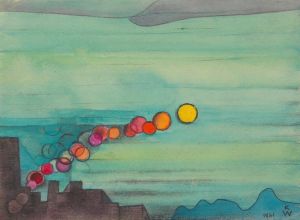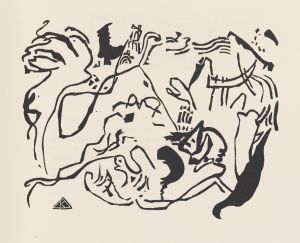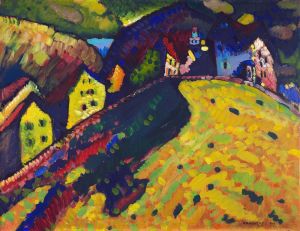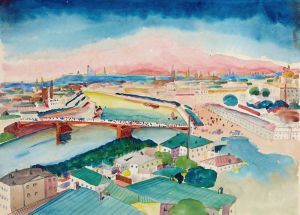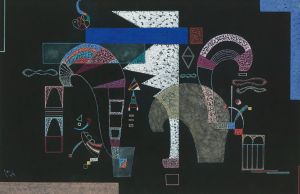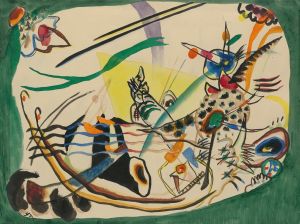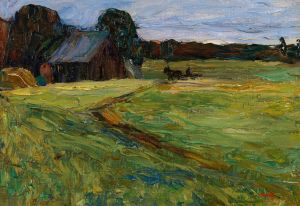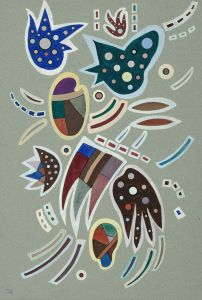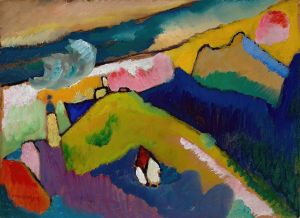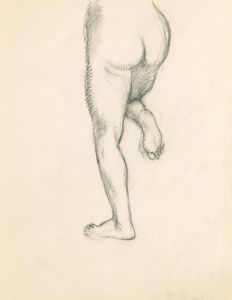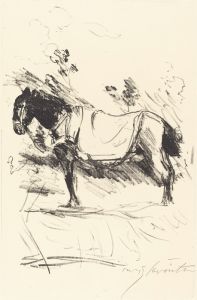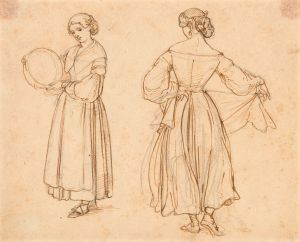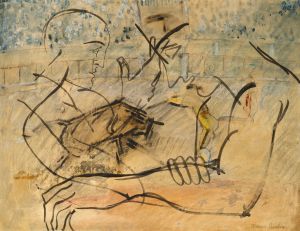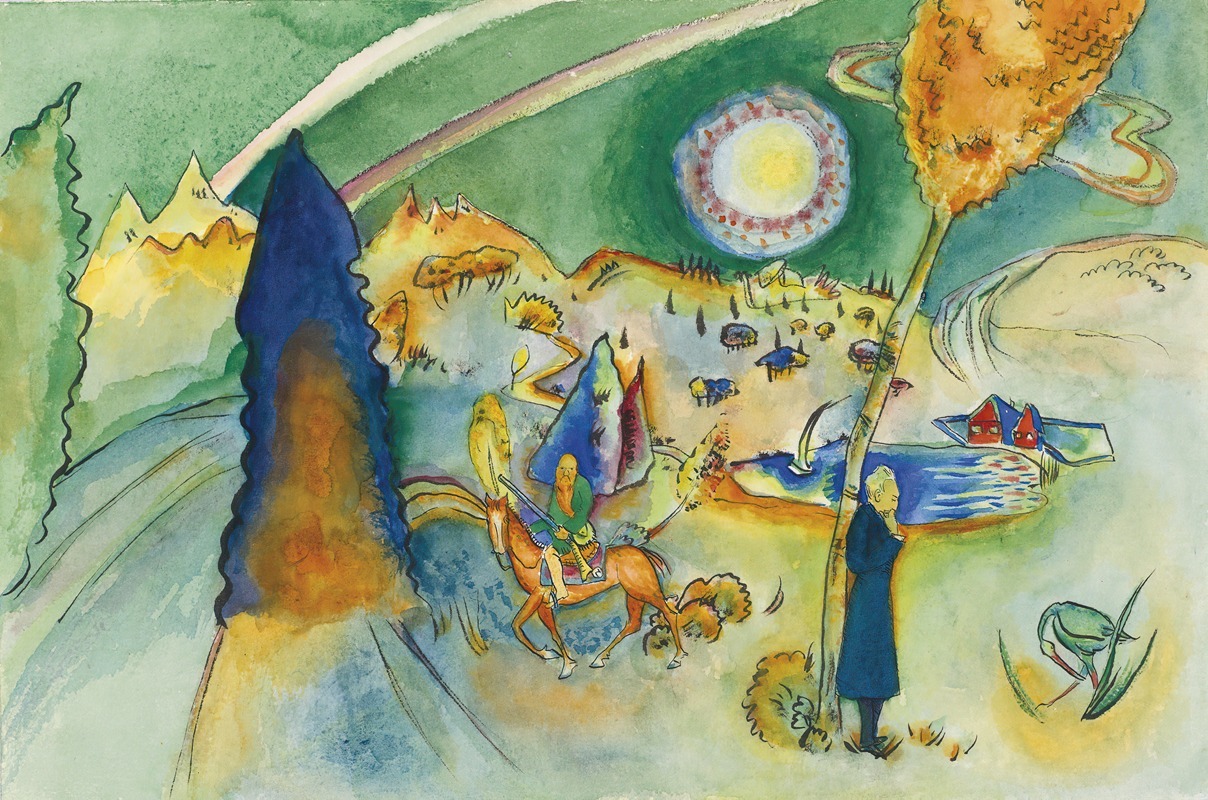
Aquarell für Poul Bjerre
A hand-painted replica of Wassily Kandinsky’s masterpiece Aquarell für Poul Bjerre, meticulously crafted by professional artists to capture the true essence of the original. Each piece is created with museum-quality canvas and rare mineral pigments, carefully painted by experienced artists with delicate brushstrokes and rich, layered colors to perfectly recreate the texture of the original artwork. Unlike machine-printed reproductions, this hand-painted version brings the painting to life, infused with the artist’s emotions and skill in every stroke. Whether for personal collection or home decoration, it instantly elevates the artistic atmosphere of any space.
Wassily Kandinsky, a pioneering figure in abstract art, created the watercolor painting "Aquarell für Poul Bjerre" in 1916. This artwork is a testament to Kandinsky's exploration of color and form, which he believed could evoke emotions and transcend the representational limitations of traditional art. Kandinsky's work during this period was heavily influenced by his theoretical writings, particularly his book "Concerning the Spiritual in Art," published in 1911, where he articulated his vision of art as a means of spiritual expression.
"Aquarell für Poul Bjerre" was created during a time of significant transition and experimentation in Kandinsky's career. By 1916, Kandinsky had already established himself as a leading figure in the avant-garde movement, having co-founded the influential art group Der Blaue Reiter (The Blue Rider) in Munich in 1911. This group, which included artists like Franz Marc and August Macke, sought to break away from traditional artistic conventions and explore new forms of expression through color and abstraction.
The painting was dedicated to Poul Bjerre, a Swedish psychiatrist and writer. The relationship between Kandinsky and Bjerre is not extensively documented, but it is known that Kandinsky often interacted with intellectuals and artists across Europe, exchanging ideas that influenced his artistic development. The dedication of this work to Bjerre suggests a personal or intellectual connection, reflecting Kandinsky's practice of engaging with contemporaries who shared his interest in the psychological and spiritual dimensions of art.
In "Aquarell für Poul Bjerre," Kandinsky employs his signature style of abstract forms and vibrant colors. The watercolor medium allowed him to experiment with fluidity and transparency, creating compositions that appear dynamic and spontaneous. This approach aligns with Kandinsky's belief in the expressive power of color and form, which he saw as capable of conveying emotions and spiritual experiences directly to the viewer.
Kandinsky's work during this period is characterized by a move towards pure abstraction, where the subject matter is secondary to the emotional and spiritual impact of the artwork. This shift is evident in "Aquarell für Poul Bjerre," where the interplay of colors and shapes creates a sense of movement and harmony, inviting viewers to engage with the painting on an intuitive level.
The significance of "Aquarell für Poul Bjerre" lies not only in its artistic qualities but also in its reflection of the broader cultural and intellectual currents of the early 20th century. Kandinsky's work was part of a larger movement that sought to redefine the role of art in society, emphasizing its potential to inspire and uplift the human spirit.
Today, Wassily Kandinsky is celebrated as a pioneer of abstract art, and his works continue to be studied and admired for their innovative approach to color and form. "Aquarell für Poul Bjerre" remains an important example of his contribution to modern art, illustrating his commitment to exploring the spiritual and emotional dimensions of artistic expression.






